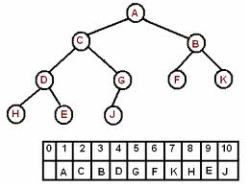Consider this scenario: You and your friend are developing an application. You code a module and use it in few source code files and send your work as a zipped file to your friend who in turn merge the code with his work. This might seem to be feasible and easy in the beginning. Eventually as you to get into serious coding(lets assume end week of your project submission) compressing the project folder and mailing it to each other might seem to be a tiresome work. You might not know the files that your friend modified and whether it is compatible with your code.
Believe me (for those who haven’t developed an app or haven’t been in a project yet) this job takes an hell lot of time and also leads to huge amount of confusion.
Isn’t there a solution??
Yes there is!!! Welcome to the magical world of version control tools!!
Using a version controller you can magically revert your source code back to any previous commits.
Git (revision control) is one of the most used version controller. It is a open source tool developed by Linus Torvalds himself!!
How cool is Git?:
Since Git helps to undo any change that a developer has done in the source code, does it create a separate backup file after each successful commit ? Surprisingly not!
With git, this all happens seamlessly in the background using databases.
Also the space required by the database is quite small!!
Basic git terminologies :
Commit- making a set of tentative changes permanent in your computer
push – moving the committed code to your remote repository
pull- getting the latest code(last commit) from the remote repository
How Git helps to coordinate a development project?
You can have a remote(cloud) repository of your code using many online services like github , Bitbucket, etc. where you can store your project files.
If your friend needs to work with your code in the project, you need not compress all the files you have modified and send it to him. Instead now since you know git can just commit -> push your code.
Your friend on the other side can pull it and it automatically merges with his project folder!! Cool eh??
How does it Git look?
Git is mostly used via the command line. Though there are visual tools for adding and removing files, etc. for Git, it is best used via the command line. More than the GUI tools you will find the git commands easy! Skeptic? Try the commands you will know!
There are many exciting features of the Git such as branching, cloning, etc. that you can explore via @ where you can find a free book on Git
Whether you are a programmer, blogger or even a writer Git is the best way to handle all the documents and files!!
